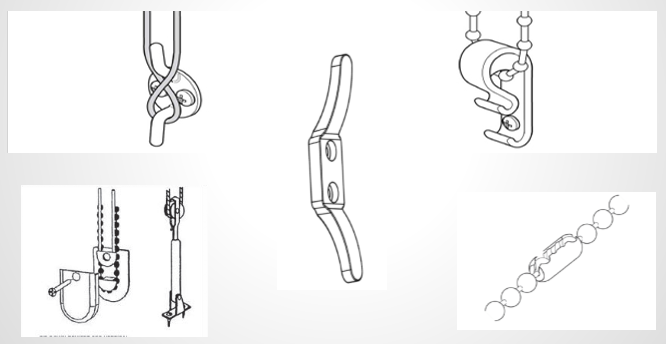Child safety and window blind cords
Every year children suffer serious injuries or death when they become entangled in window blind cords. Since September 2014, updated European safety standards require all window blinds to be designed, manufactured and fitted in a way so as to limit the strangulation risk to children. Windows blinds are under the European Communities (General Product Safety) Regulations 2023.
The Competition and Consumer Protection Commission (CCPC) is responsible for the enforcement of certain product safety legislation and ensuring that products meet the appropriate safety standards, such as the Internal Blind safety standards. The CCPC also has a duty to inform consumers of the risks posed by cords on internal blinds. Manufacturers, retailers and suppliers of window blinds should be aware of the standards and the types of products they affect.
The types of window corded products covered by these standards include:
- Venetian blinds
- Roller blinds
- Vertical blinds and pleated blinds
- Honeycomb blinds
- Roman shades
- Austrian/Festoon blinds
- Panel blinds
- Plantation shutters
- Roll-up blinds
Safety devices can help to improve the safety of window blinds and prevent accidents. These safety devices can either be fitted to window blinds during the manufacturing process or retro-fitted to window blinds that have already been installed.

Figure 1: Safety Devices for Window Blinds as described in GPSD Harmonised Standard EN 13120
Window blinds safety standards in Ireland
‘Internal blinds – Performance requirements including safety’, EN 13120:2009+A1:2014: This standard amends the previously existing European standard (EN13120) which was published in 2009. It specifies the requirements that internal blinds should fulfil when they are fitted to a building. The amendment expands the scope to cover many types of blinds, while expanding the clause on ‘protection from strangulation’; to address specific hazards posed by cords.
‘Internal blinds – Protection from strangulation hazards – Test methods’ EN 16433:2014: This is a new standard that specifies test methods which can be used to verify that a window blind conforms to the requirements relating to protection from strangulation; as specified in EN 13120.
‘Internal blinds – protection from strangulation hazards – Requirements and Test methods for safety devices’, EN 16434:2014: This standard specifies the safety requirements for test methods for safety devices that can help to improve the safety of window blinds and prevent accidents. These safety devices can be fitted to window blinds during the manufacturing process or alternatively fitted to window blinds that have already been installed.
The National Standards Authority of Ireland has published information on Safety Awareness for Window Blinds.


